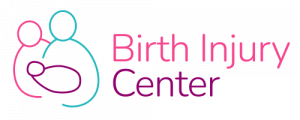Cerebral Palsy and Epilepsy
Children with cerebral palsy (CP) are more likely to have other neurological conditions, including epilepsy. This is a condition in which a person has multiple seizures, which are bursts of uncontrolled electrical activity in the brain. Although epilepsy can have a significant effect on a person’s quality of life, it can often be managed with medications or other treatment options.
Home > What Is Cerebral Palsy? > Cerebral Palsy and Epilepsy
- Last Updated Date: September 22, 2023
Cerebral palsy (CP) is a neurological disorder that develops due to brain damage occurring before, during, or shortly after birth. Children with CP have an increased risk of other neurological conditions, including autism and epilepsy. Epilepsy is a condition in which a person has multiple seizures. A seizure is a burst of abnormal electrical activity in the brain.
Seizures are sometimes called convulsions because it’s common for a person to have abnormal body movements during a seizure. However, there are different types of seizures, and unusual body movements don’t always occur. People may experience changes in behavior and unusual sensations during a seizure. They sometimes lose consciousness during the event or don’t remember it later.
It’s important to note that not every person who has had a seizure has epilepsy. People may have seizures for a variety of reasons, including traumatic brain injury, brain tumors, strokes, fevers, infections, or kidney or liver failure. To be diagnosed with epilepsy, a person must have at least two unprovoked seizures. A seizure is classified as unprovoked when there’s no obvious cause.
Research indicates that about 8 percent to 10 percent of people in the general population will have at least one seizure in their lifetimes. However, only about three percent of people will receive a diagnosis of epilepsy.
Is epilepsy more common in people with cerebral palsy?
Epilepsy is significantly more common in people with cerebral palsy. About 40 percent of patients with CP also have epilepsy. This is over 10 times the rate of the general population.
The risk of epilepsy is different for children with different types of CP. Children with spastic tetraplegia (also known as spastic quadriplegia) have a particularly high risk of epilepsy. This is a more severe form of CP affecting all four limbs. It’s also commonly associated with other neurological issues, like hearing and vision problems.
Children with spastic hemiplegia also have a high risk of epilepsy. This type of CP affects the arm and leg on one side of the body. Although these children usually have typical intelligence, they often have speech delays in addition to their increased risk of seizures.
By contrast, children with spastic diplegia are less likely to have epilepsy. This form of CP primarily affects the legs. Most kids with spastic diplegia have typical intellectual and language development.
Those with ataxic or dyskinetic CP rarely suffer from epilepsy, although it can occur.
How are epilepsy and cerebral palsy related?
Any condition that causes damage to the brain can lead to epilepsy because damage to the brain makes it difficult for brain cells to control their electrical activity. They may become easily overstimulated, so they fire electrical impulses when they shouldn’t. In addition, brain damage can cause changes in the way brain cells are connected to each other. When a small group of brain cells becomes overly active, this activation can spread to other parts of the brain, causing a seizure.
Cerebral palsy is caused by a brain injury. The damage to the brain interferes with the brain’s ability to control the body’s movements, causing the symptoms of CP. In children with CP, damage to the brain may occur before, during, or shortly after birth. For example, oxygen deprivation during birth can cause brain damage, leading to CP.
Cerebral palsy doesn’t cause epilepsy. Instead, both conditions are manifestations of underlying damage to the brain. This brain damage occurs early in life in children with CP. Because of this, if a child with CP is going to develop epilepsy, they’ll generally show symptoms in infancy or early childhood. Out of children with CP who also have epilepsy, about 50 percent have their first seizure within the first year of life.
What are the types of epilepsy?
There are several types of seizures, classified by factors like how the seizure starts, whether the person is aware during the seizure, and what happens to the body during the seizure.
Seizures can involve all or just part of the brain.
- Focal seizures occur in one area of the brain. People may experience a variety of symptoms during a seizure, such as muscle twitches, a strange taste or smell, or feeling confused and disoriented.
- Generalized seizures involve large areas of both sides of the brain. They may start as focal seizures and then spread, or they may be generalized onset seizures, in which seizure activity starts in multiple areas of the brain at
once. Generalized seizures may involve a period of “staring into space” (called an absence seizure) or may involve
significant changes in muscle tone, such as stiffness, muscle jerks or spasms, or going limp.
People with epilepsy can have more than one type of seizure. Doctors look at the symptoms experienced during the seizure and the results of imaging studies (like an MRI) and an EEG (which looks at the brain’s electrical signals) to determine what type(s) of seizures a person with epilepsy is having and where the seizures are originating in the brain.
In children with cerebral palsy, the diagnosis of epilepsy may be somewhat more complicated than in children without the condition. It may be difficult to distinguish involuntary body movements resulting from a seizure from the movement-related symptoms of CP. In addition, many children with severe CP have cognitive challenges, which can make the diagnosis of epilepsy more complex. The brain abnormalities found in children with CP can also make it more difficult to interpret the results of brain imaging studies or EEGs.
How is epilepsy managed?
Epilepsy can be a challenging condition and often has a significant impact on a person’s quality of life. Fortunately, there are several treatment options available.
Medications
In general, the first line of treatment for epilepsy is a type of medication known as an anticonvulsant. Also known as antiepileptic drugs or AEDs, these medications can control seizures. They aren’t considered a cure for epilepsy because they don’t address the underlying brain abnormalities that lead to seizures. Instead, they alter the electrical activity of the brain, making seizures less likely to occur.
Several types of anticonvulsants are available. Some of the most common include:
- Topiramate
- Lamotrigine
- Carbamazepine
- Levetiracetam
- Sodium valproate
About 60 percent to 70 percent of patients with epilepsy become seizure-free with the first antiepileptic medication they try. For those who don’t get relief from the first medication, switching medications or adding a second medication may help. Some patients will not become entirely seizure-free, but will experience fewer seizures with the medication than without it.
Although anticonvulsant medications are effective in many cases, they can also have significant side effects. The most common of these include:
- Fatigue
- Nausea
- Double vision
- Dizziness
- Difficulty thinking clearly
- Mood changes, such as depression
If a particular anticonvulsant causes intolerable side effects, then trying a different medication might help. However, all anticonvulsants generally have similar side effects, so it’s unlikely that the new medication will feel significantly different than the old one.
If medications are not effective at controlling seizures, or if they cause significant side effects, there are other treatment options that can be used.
Dietary Interventions
A high-fat, very-low-carbohydrate diet can control epilepsy in some people. The classic version of this is known as the ketogenic diet, which consists of 90 percent fat. Although it’s been shown to be effective in controlling seizures, the ketogenic diet is very hard for most people to sustain because it’s extremely restrictive.
A less-restrictive version known as the modified Atkins diet is sometimes used instead. Although it still emphasizes fat, it allows more protein, which makes it easier to sustain over the long term.
It’s important for this type of diet to be overseen by a medical professional. All aspects of the diet will need to be planned out, including using mathematical calculations to determine what the child should eat based on their weight.
Without the right planning, a ketogenic or modified Atkins diet can lead to complications such as nutrient deficiencies. If you believe that a dietary intervention might help your child with epilepsy, discuss this with their care team before you make any major changes to what your child is eating.
Surgery
In patients who have focal seizures, surgically removing a small piece of brain tissue in the area where the seizures start can sometimes be helpful. In those with generalized seizures, it may be possible to surgically disconnect certain parts of the brain from each other to prevent seizures from spreading.
These procedures have traditionally been performed surgically, and this technique is still utilized. There are also newer minimally-invasive techniques that use radio frequency energy transmitted by electrodes to target and destroy specific areas of brain tissue without requiring surgical incisions.
Epilepsy surgery does carry significant risks. It can only be performed if the area of the brain where the seizures start doesn’t perform any vital functions, like speech, vision, hearing, motor control, or language processing. Because the changes to the brain after the procedure are permanent, it’s very important to carefully think through the decision to proceed with surgery.
However, studies have shown that more than 60 percent of children who have epilepsy surgery become seizure-free, so it may be a good option for some patients.
Vagus Nerve Stimulation
Vagus nerve stimulation, or VNS, is another epilepsy treatment option. A small device called a generator is implanted into the chest through an incision. Wires are passed from this device to the vagus nerve, which is a large nerve that runs up the side of the neck and into the brain. The device sends regular pulses of energy to the brain via the vagus nerve, which can reduce the frequency of seizures.
When a seizure does happen, the patient or a caregiver can pass a magnet over the device to send an extra burst of stimulation to the brain, which sometimes stops the seizure.
Vagus nerve stimulation reduces the frequency of seizures by at least 50 percent in about half of patients, and about 11 percent become seizure-free. It’s less effective than epilepsy surgery, but may be helpful for those patients who aren’t candidates for surgery and who have not had success with other treatment methods.
Written by:
Birth Injury Center Team
The Birth Injury Center aims to create informational web content and guides to help women and their families seeking support and guidance for birth injuries caused by medical negligence. All of the content published across The Birth Injury Center website has been thoroughly investigated and approved by medical expert Natalie Speer, RNC-OB.

